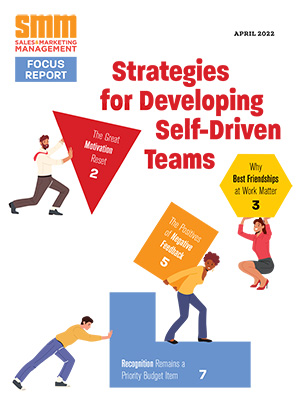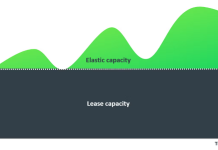In highly competitive industries, whether crowded markets like CPG or complex sectors like pharma, differentiation is one of the biggest challenges. When competitors offer similar features, pricing and benefits, how does a brand break through? Traditional marketing often relies on high-volume, impersonal outreach, but a more effective approach is emerging: education-led marketing.
Rather than selling, education-led marketing teaches. It transforms a brand into a trusted advisor, providing knowledge that helps buyers make informed decisions. Yet, only 1% of decision makers believe that B2B marketing demonstrates a meaningful understanding of human experience. This disconnect shows why marketing and sales conversations that prioritize education – offering real insights instead of generic pitches – stand out, build trust and ultimately close more deals.
Misconceptions That Derail Sales and Marketing Alignment
Even when teams understand the value of educating buyers, execution often falls short. Three frequent missteps can stall momentum:
- Prioritizing the brand over the buyer. If content is self-centered, it misses the mark. Sales and marketing must collaborate to frame the buyer as the hero and the brand as the guide.
- Confusing complexity with value. The most compelling content comes from cutting out jargon and keeping Buyers today face information overload, but clarity and focus help cut through and drive better decisions.
- Treating every buyer the same. Templates have their place, but education-led strategies demand customization. Teams need to tailor messages by segment, buyer role, and stage of the journey.
Why Education-Led Marketing Works
Education-led marketing takes a different approach, positioning brands as trusted knowledge resources rather than just product or service providers. When sales and marketing teams unite through education instead of pushing a product, they help buyers solve problems, evaluate options and make more confident purchasing decisions.
At its core, education-led marketing builds trust first and drives sales second. When marketing and sales teams act as educators, they create a natural pull toward their solutions. Buyers engage because they feel informed, not pressured – a crucial factor in B2B and high-consideration industries, where expertise and credibility shape purchasing decisions.
The Blueprint for Effective Education-Led Marketing
How can marketing leaders and sales managers make their education-led marketing strategy clear, compelling and memorable? The most successful approaches integrate these elements:
1. A Team of Category Educators
The foundation of education-led marketing is empowering teams to become credible experts. These professionals don’t just know the brand; they understand buyer pain points, business needs and market trends. Rather than pushing a sale, their role is to provide insights that educate and empower buyers to want to learn more. This doesn’t always mean building a new team. Many companies successfully upskill existing sales and marketing teams, equipping them with the tools to engage buyers as trusted advisors rather than traditional sellers.
Diageo’s Hospitality Partnership program is a prime example. Rather than simply selling spirits, Diageo deploys a team of industry experts to train management and staff at bars, restaurants and . By offering this specialized knowledge, Diageo elevates its products from commoditized offerings to must-have portfolio staples for hospitality professionals.
2. Actionable Content and Branded Education Programs
The days of generic brochures and one-size-fits-all sales pitches are over. Education-led marketing requires advanced materials that:
- Align with business objectives: Content should clearly articulate how a brand can help enhance a customer’s business.
- Address specific customer pain points: Effective storytelling highlights how the product provides a unique solution that solves a challenge.
- Offer real learning: The best educational content is engaging, structured, and easy to absorb. It must be detailed enough to inspire interaction while also leaving the customer yearning for more.
3. Immersive, Unforgettable Experiences
People retain information best through experience. Hands-on learning, whether through live demonstrations, interactive workshops or immersive digital content, ensures that the knowledge sticks.
Education-led marketing experiences range from intimate, expert-level sessions designed for industry insiders to large-scale events that introduce customers to a brand’s philosophy and expertise. The key is participation. When buyers engage directly, they don’t just hear the story, they experience it. And when they can apply what they’ve learned, they’ll remember who taught them.
Transparency and Trust: The Key to Lasting Impact
Buyers quickly detect when brands are using storytelling as a thinly veiled sales tactic, so transparency is critical. The goal isn’t to overwhelm the audience with information but to provide genuinely valuable insights through memorable experiences.
By shifting from aggressive selling to education-led engagement, brands empower buyers and foster deeper, more authentic relationships. This approach not only builds lasting trust, but also helps sales teams differentiate in even the most competitive markets.
How to Make It Real: A Playbook for Leaders
If you want education to become a growth driver and not just a marketing tactic, here’s where to start:
- Train the trainers. Prioritize subject-matter fluency and presentation skills across your sales and marketing teams. Invest in making your teams not only product-savvy but true category experts – people who can speak with authority about buyer challenges, industry dynamics and competitive context. That’s what builds trust and credibility in every customer conversation.
- Tear down knowledge silos. Align content strategy, sales enablement and inside/outside sales around one shared learning objective. When messaging, tools and conversations are coordinated across functions, buyers receive a consistent, insightful experience no matter who they talk to.
- Build to scale. Develop toolkits, templates and knowledge hubs that teams can reuse across cycles. At the same time, empower reps to adapt materials with context and personalize without breaking consistency. The goal is scalable structure with room for nuance to show understanding of customer needs.
At its core, education-led marketing represents a shift in mindset. Marketing and sales teams don’t need to make more noise; they need to share more knowledge to build relationships, inspire confidence, and create lasting loyalty. And in a world where standing out is harder than ever, that’s a strategy worth investing in.





